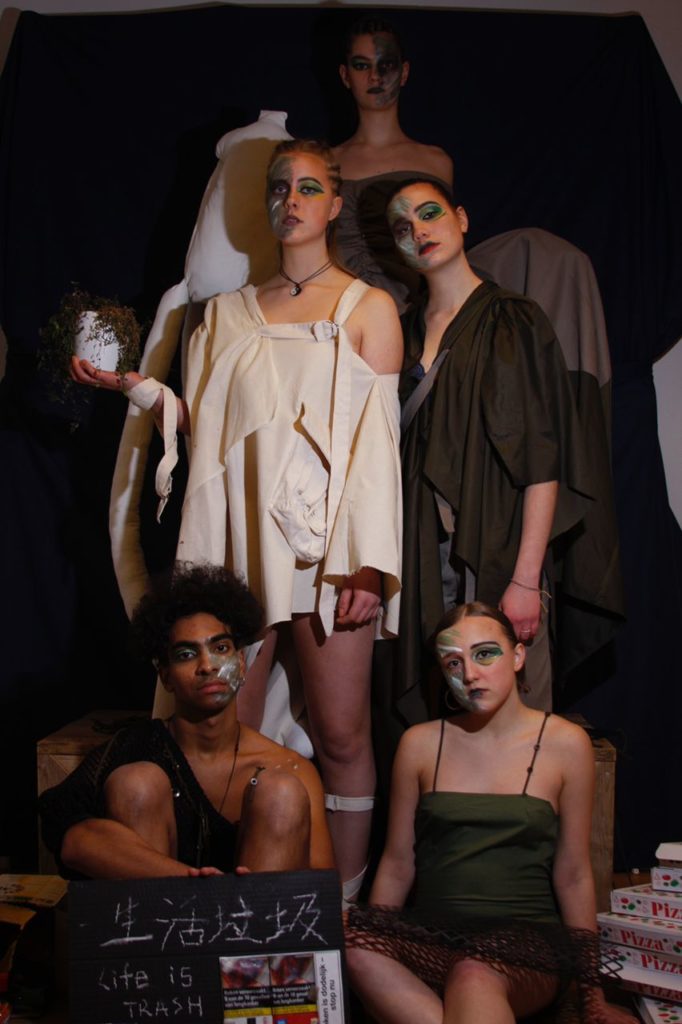
In 2020, a fashion collection was showcased as part of an art exhibition for the 6th annual International Peace Conference (IPC). The artist who created the collection, X (Xinge Ju), is a young designer studying Fashion Design at POLIMODA in Florence. She believes that art is more than mere self-expression through aesthetics; in her view, it is also a transcendent force to promote social change. Out of all art forms, she identifies fashion, which is a form of wearable art, as the most accessible for the public and her way to have the biggest impact.
Founded by two students at UWC Maastricht,[i] Mohammad M. Alshalalda from Palestine and Ido David from Israel, the International Peace Conference is an entirely student-led initiative which brings together young people from all over the world to foster conversation and reflection on peace-making, conflict resolution and the obstacles to achieving peace.[ii] IPC 2020 – The Eyeland focused on ideas of utopia and dystopia, exploring different forms of conflict and their influence on conceptions of peace as an ideal. The theme was chosen to push the audience to move beyond abstract, idyllic ideas of peace, challenging individuals to be realistic in evaluating the tangible actions they can take towards peace in their daily practices.
The IPC mission statement sets out their agenda clearly:
To strive for and actively pursue peace, we shall:
1. Explore the barriers and bridges to peace, by:
– Gaining a thorough understanding of our world conflicts and the measures taken to resolve them from the viewpoint of youth, diverse in origin and opinion
– Engaging in genuine discussion, that invites all parties to the forefront of deliberation
2. Spark activism and, where relevant, initiatives throughout the realms of our global society, by:
– Deriving knowledge from all spreads of society
– Instilling a sentiment of global responsibility in the youth
– Emphasizing the accessibility of both peace and the path towards it.
3. Develop a keenness to view peace from a multidimensional perspective, ensure that biases are set aside, and assimilate a sense of critical idealism.
Visualising conflict and peace-building through fashion
Human beings encounter countless conflicts, both externally and internally. Major conflicts such as war and discrimination occur between different races and countries. We also experience smaller, yet equally impactful conflicts in our daily lives. For example, on a physical level, we get headaches, we get injured, and we get sick. Mentally, we experience feelings like loneliness, anxiety and stress. The dictionary says that conflict is a serious disagreement or argument, typically a protracted one. We’ve paid so much attention to conflict itself. Historical books tell stories about battles, invasions and revolutions, physiological research tells us how to achieve mental health. But as an individual, what is the meaning of conflicts in ourselves, and in the others?
And, a question for you, would conflicts exist without human connections?
This was the sentence that each person entering the exhibition read, along with a set of rules forbidding the audience to interact with the models or to make eye-contact with them. A first, symbolic gesture to start a conversation about the role of human connections and relationships in solving but also creating conflicts. The absence of contact was required not only between spectators and models but also amongst models, who walked around and filled the stage never looking at each other nor exchanging interactions. This staging of a ‘dynamic stillness’ of connections naturally prevented any conflict from arising, but did not address the underlying conflicts represented on stage – in the form of military-style clothing, avoidance, competition for space and attention, and so on. This sparked a reflection on how absence of confrontation can sustain a situation of negative or fragile peace, while only dialogue can ensure sustainable peace – despite the risks of dialogue also sparking conflict.
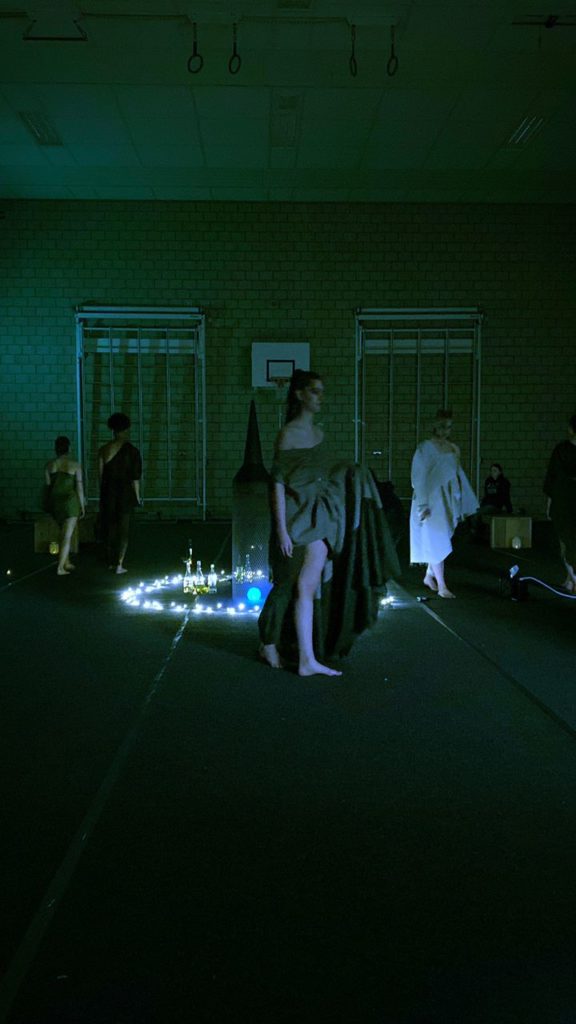
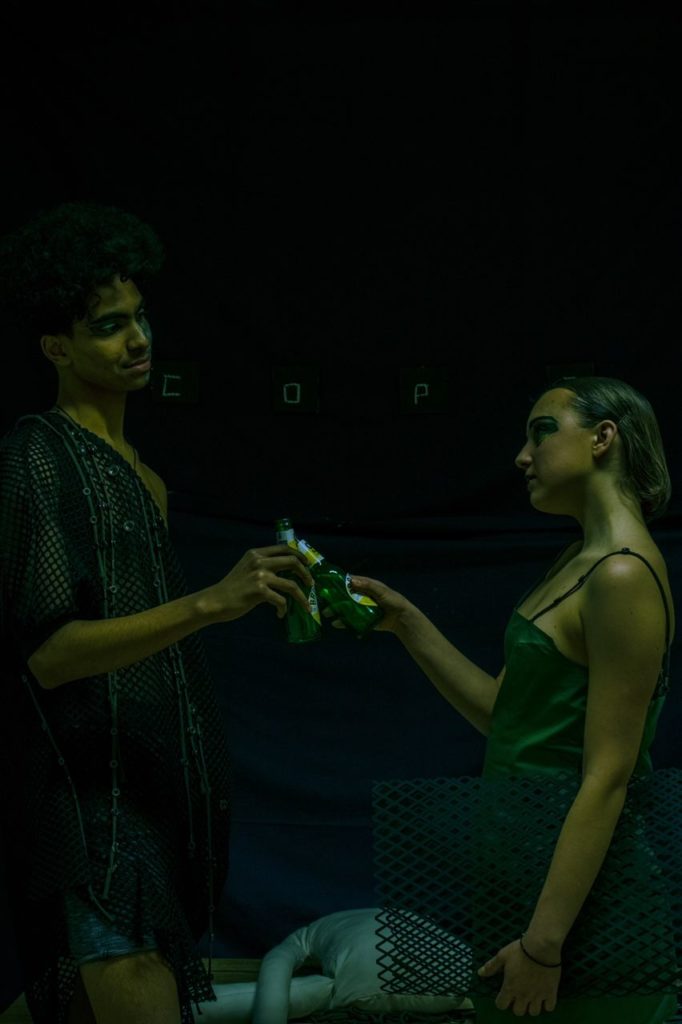
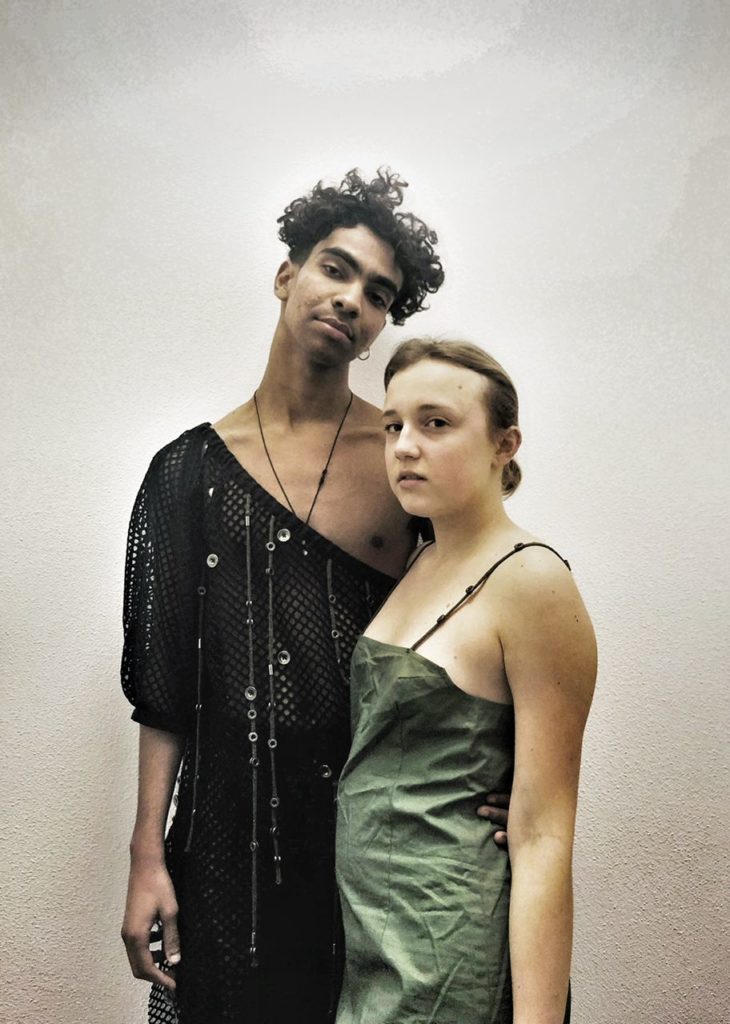
All the clothing designs were inspired by buildings destroyed during war. The colour scheme recalls soldier’s uniform, through the use of a lot of military green and black and also through the presence of accessories recalling military equipment, like the net wore by the male model. The fabric used is waterproof, emphasising the functionality of the garments, both in terms of fighting a war and rebuilding communities and cities during the post-conflict phase. The different items of the collection do not have an individual purpose and should be analysed adopting a holistic approach, just like the understanding of conflicts and peacebuilding processes should be systematic and inclusive of all perspectives and intricated challenges. Moreover, the pieces were not showcased on a catwalk, but models were walking around crossing paths and filling the space, almost symbolising the intersectionality of different conflicts and disruptions of peace and creating a sense of solidarity amongst those people and places that are striving for peace.
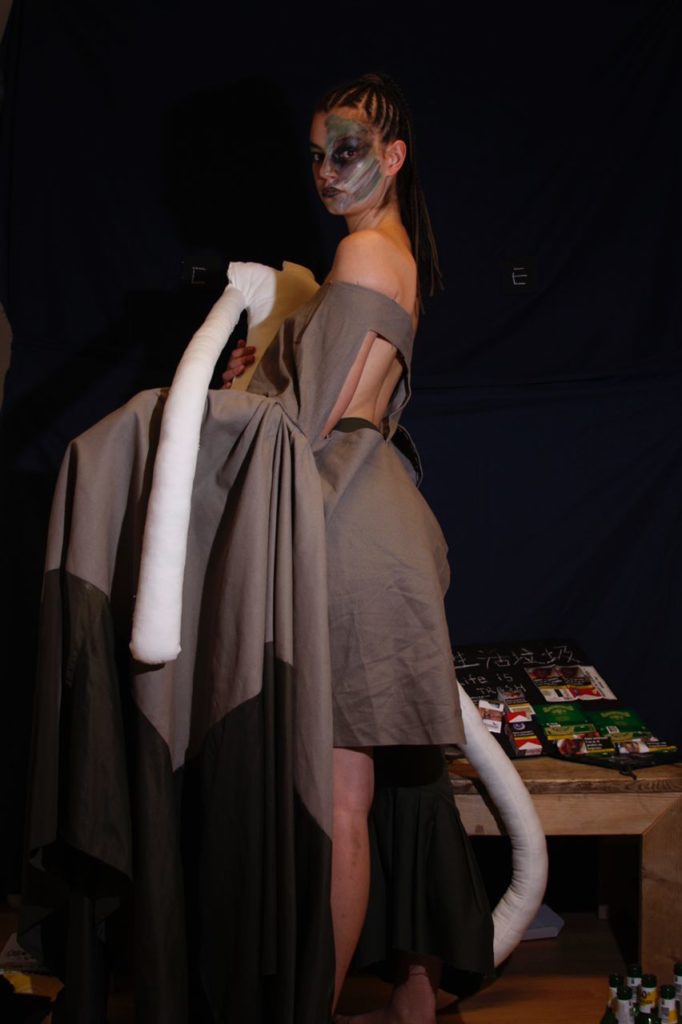
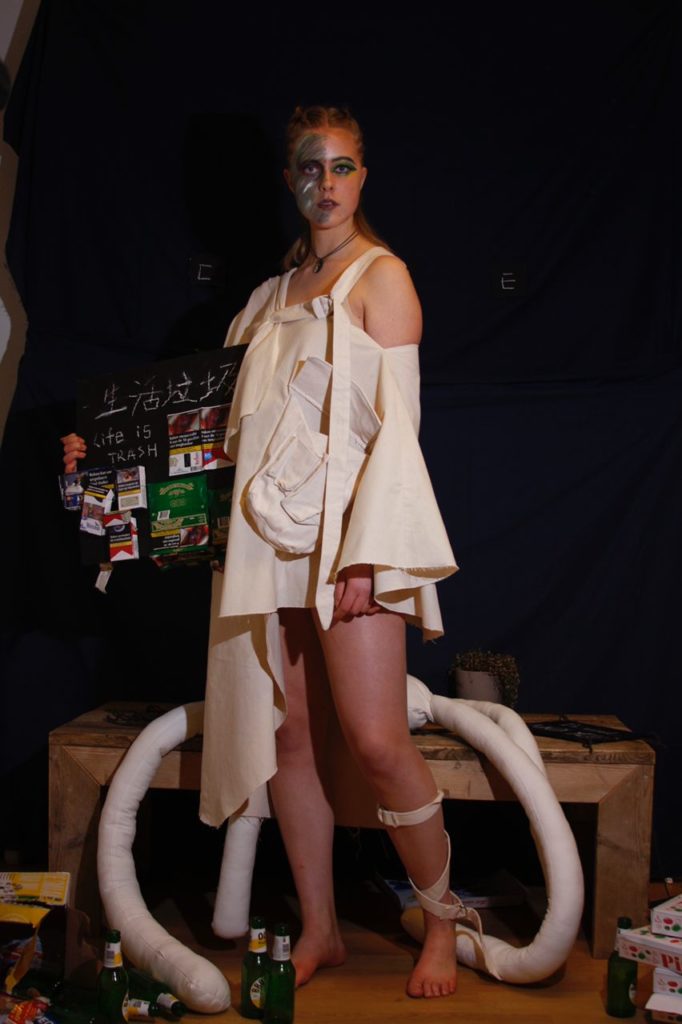
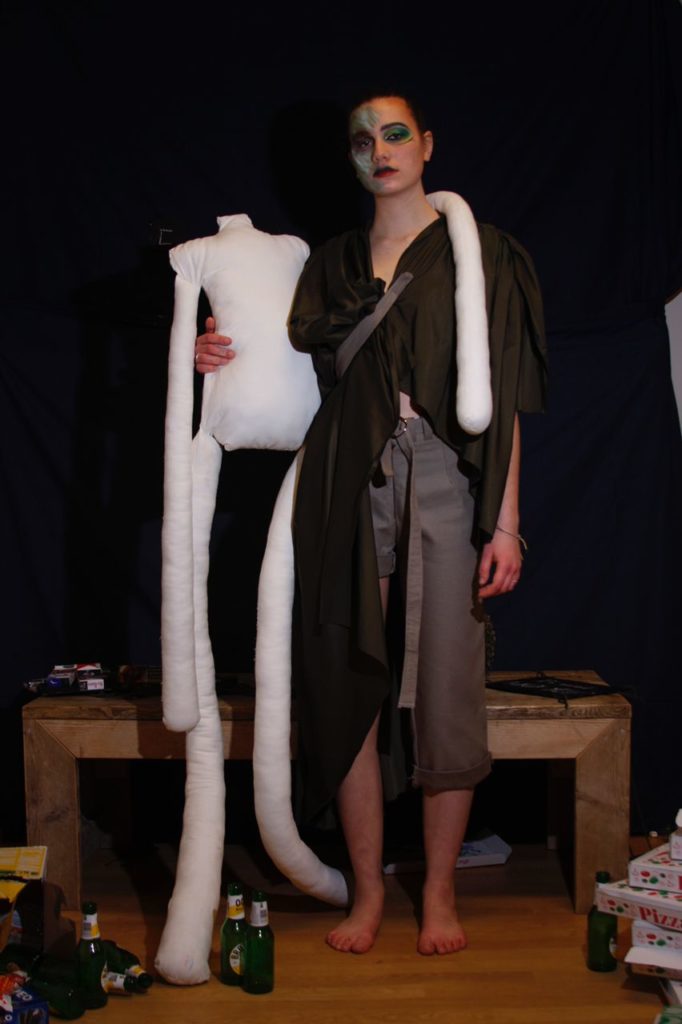
Another interesting aspect of the exhibition was the connections made to concepts of utopia and dystopia in Peace Studies. This was expressed through the audio played in the room during the performance. The audio, curated by fellow student Hope Ho, was an overlapping of a piano performance representing an idyllic vision of peace and a recording of people from 15 different countries defining utopia and dystopia in relation to peace. The script for the recording was created using the responses from a form sent to the student community, which includes youth from 16 to 20 years old from diverse socioeconomic and cultural backgrounds, trying to incorporate as many perspectives on peace as possible. Watching the fashion show and listening to the recording, the audience was pushed to reflect on the idealisation of peace and the risk of overlooking some aspects of it that can lead to the establishment of realities encapsulating a distorted or even dystopic version of peace.
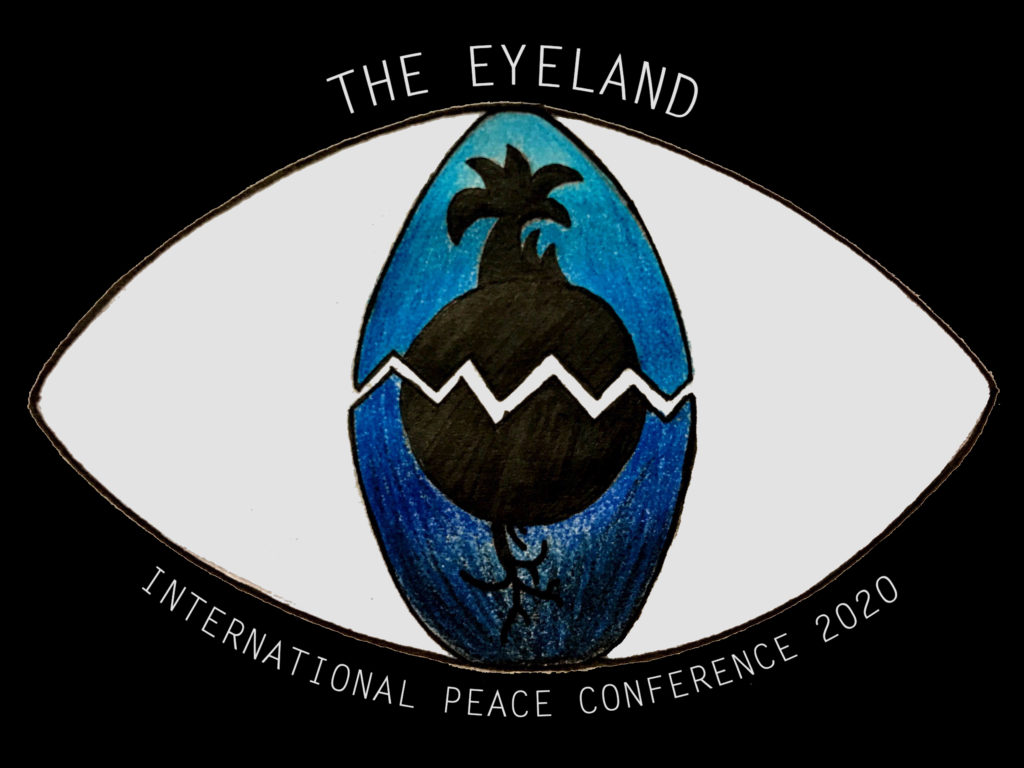
If you want to further reflect on the implications of adopting a utopian approach in imagining future peace, you can read the following articles:
Horner, “Peace as an event, peace as utopia: a re-imagining of peace and its implications for peace education and development”.
Thaler, “Peace as a Minor, Grounded Utopia: On Prefigurative and Testimonial Pacifism”.
Breines, “The culture of peace – a necessary utopia?”.
What do you think?
- Given that disagreement and fear of ‘the other’ are intrinsic to human nature, is peace actually achievable or is it the ultimate utopia?
- How do you visualise a utopian society and what are the elements that characterise it?
- Is it possible to agree on what a utopian world would look like? And if not, is it even possible to picture future realities without conflict and establish sustainable peace?
- What are the implications of adopting an idealistic approach to peace?
- What do we gain (or lose) by taking a more ‘realistic’ or even dystopian approach to visualising and pursuing peace?
If you enjoyed this item in our museum…
You might also like ‘Brave New World‘, ‘Valentino’s Peace Dress‘, ‘Intergalactic Freedom Dress‘, ‘Isha Sadhguru’s Fashion for Peace‘ and ‘Jean Gritsfeldt, Berlin Fashion Week‘.
Lia Da Giau (May 2022)
[i] The United World Colleges (UWC) are an educational movement promoting education as a tool to foster peace and sustainability through multicultural understanding: https://www.uwc.org/educationalmodel.
[ii] You can find out more about the International Peace Conference and its history and purpose here: http://www.internationalpeaceconference.org/origin.html.